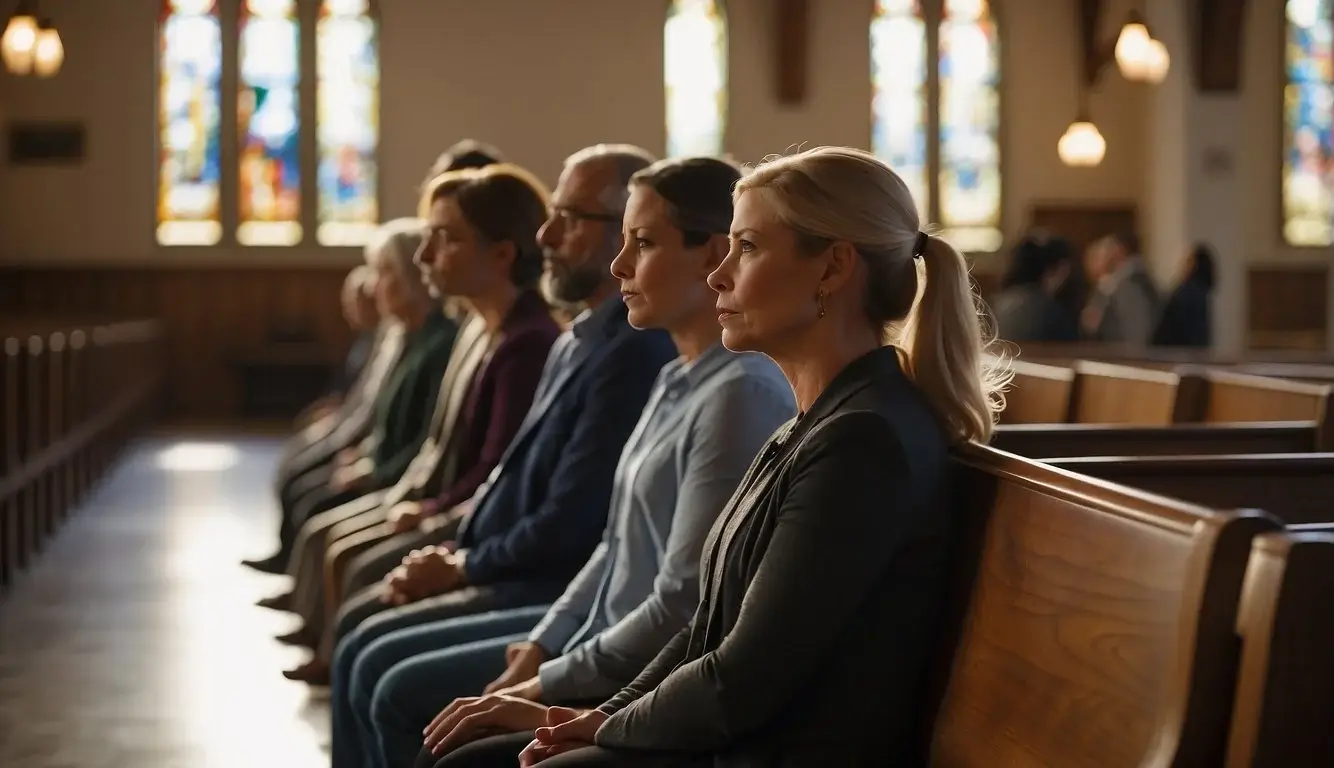Following an exploration of various traditions and consultations with members of the community, I am thrilled to share my insights into church etiquette, an essential aspect of respectfully engaging in collective worship. It has become clear to me that the way one conducts themselves in a sacred space greatly affects the communal spiritual ambiance, since proper conduct fostices a serene and reverent atmosphere for all.
This guide to church etiquette delves into the nuanced expectations of behavior within different religious settings, acknowledging that practices can vary widely among congregations. From dressing appropriately to arriving on time, each action is a testament to reverence for the shared spiritual experience. Engaging fully in services, understanding the importance of silence, and participating in rituals with mindfulness contribute to the communal worship experience, making each service a profound opportunity for spiritual connection and communal harmony.
Key Takeaways
- Respecting church customs enhances everyone’s worship experience.
- Timely arrival and appropriate participation are key aspects of church etiquette.
- Adapting to the nuances of special church services demonstrates reverence.
Arrival and Seating
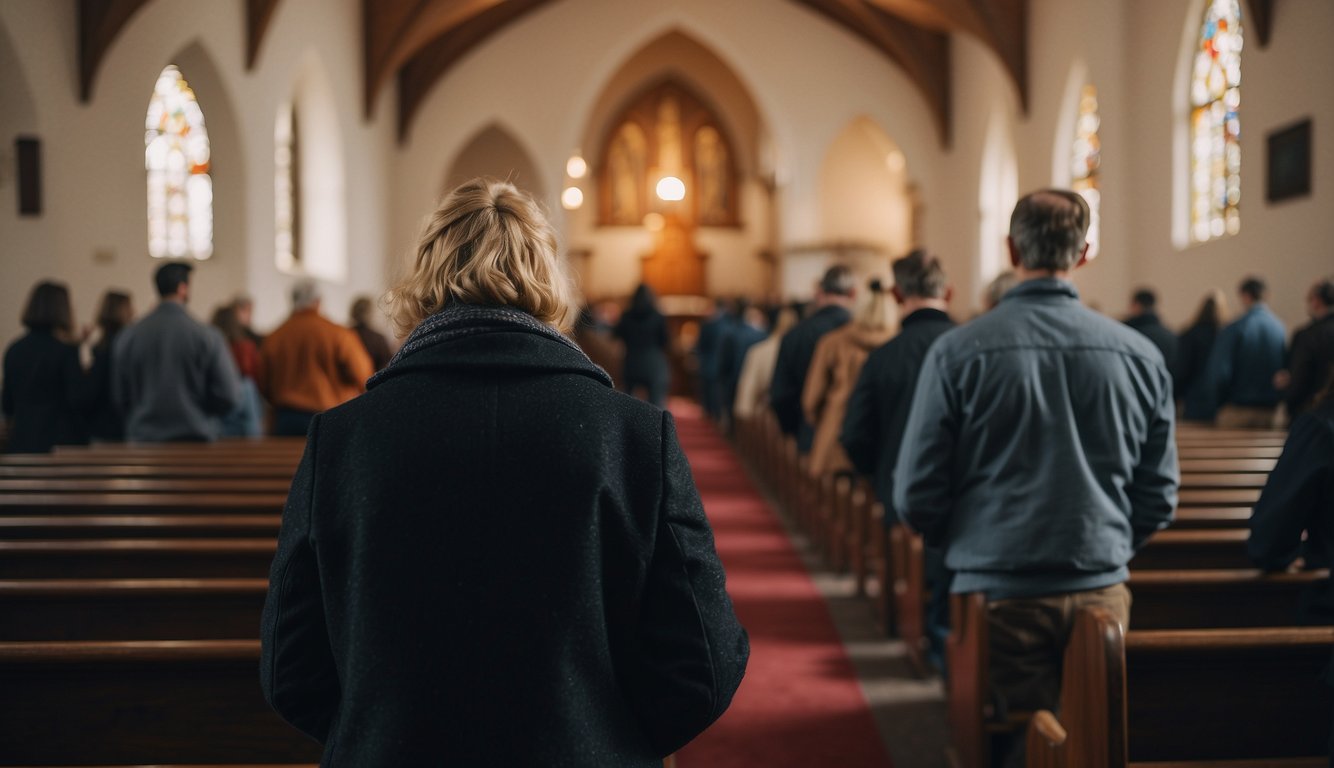
In my experience, arriving and finding a seat in church sets the tone for worship. It’s not just about securing a spot but also respecting the sanctity of the service and the comfort of those around me.
Timeliness
I always aim to arrive on time, preferably 5 to 15 minutes early. This way, I can settle in without rushing, have a moment of reflection before the service, and ensure minimal disruption. For those inevitable late moments, I try to enter quietly during a natural break in the service.
Choosing a Seat
Choosing a seat can sometimes feel like solving a puzzle. I look for a pew with enough space and prefer not to sit on the aisle unless I’m expecting to step out early. While I enjoy wearing my favorite pair of denim jeans to casual outings, I avoid them along with anything too tight or flashy for church out of respect for the solemn atmosphere.
Accommodating Families
When I see families with children, I remember to be accommodating by allowing them access to seats where they can easily manage their little ones. I also ensure that I’m sitting in a place that helps maintain a peaceful environment for the children and other congregation members.
Conduct During Service
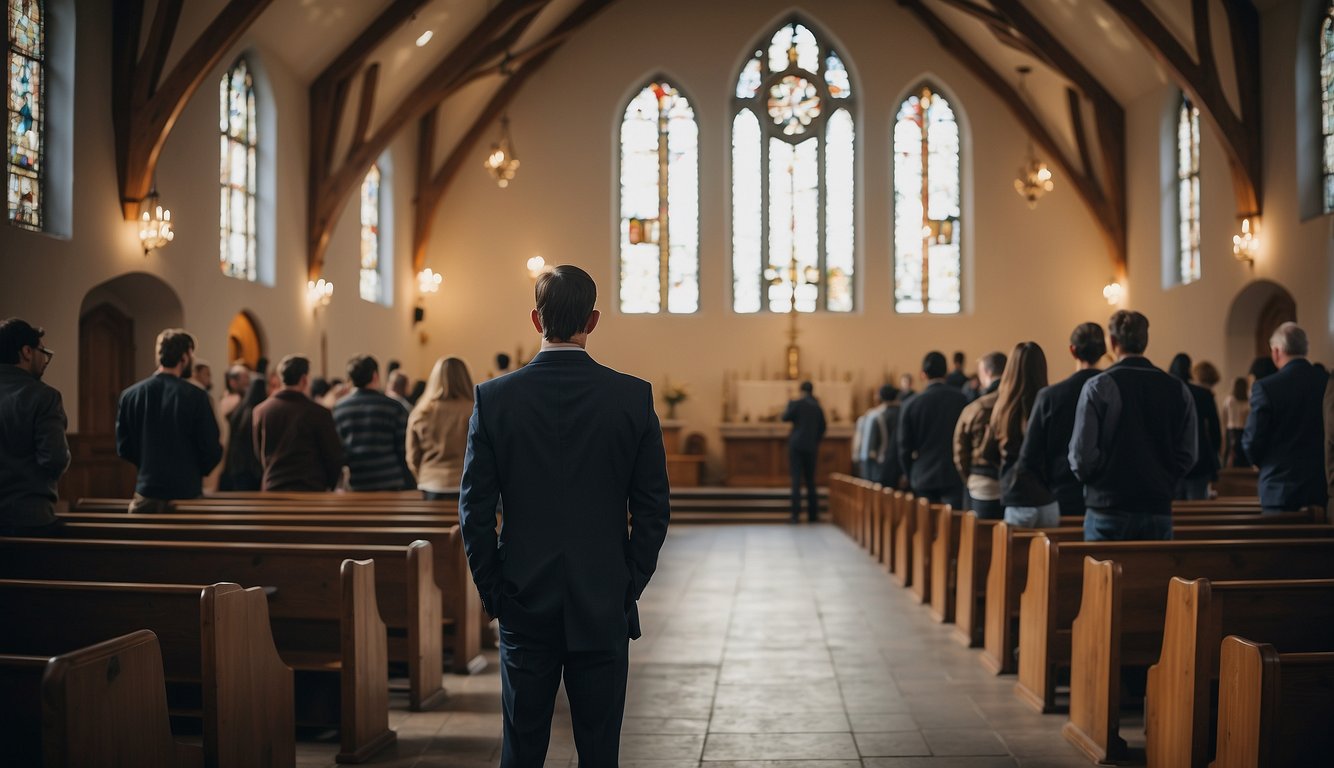
When attending a service, it’s crucial for me to exemplify reverence and attentiveness to worship God properly and respect the sanctity of the church environment.
General Behavior
- Quiet and Reverent: I remain as quiet as possible to maintain a prayerful atmosphere. It’s crucial to show reverence in the presence of God.
- Respect: I always ensure that my actions don’t distract others. Standing or kneeling at the appropriate times shows unity and respect for the worship service.
- Attentiveness: Focusing on the sermon without interruption allows me and others to receive the message entirely.
Participation in Prayers and Hymns
- When it’s time to pray, I join in with a sincere heart, whether I’m reciting prayers aloud or silently.
- During hymns, I participate joyfully, clapping when appropriate and standing as a sign of engagement and veneration.
Smartphone and Distraction Management
- Phones: I keep my smartphone on silent or turn it off to avoid unintentional disruptions.
- Distraction-Free: I actively avoid engaging in activities that could distract me from the service, like texting or browsing social media.
- In moments meant for reflection or communion, I ensure I am fully present and mindful of the Body of Christ.
By adhering to these practices, I can venerate the heaven we strive to reflect in our place of worship, contributing to a respectful and prayerful environment for all in attendance.
Church Ordinances
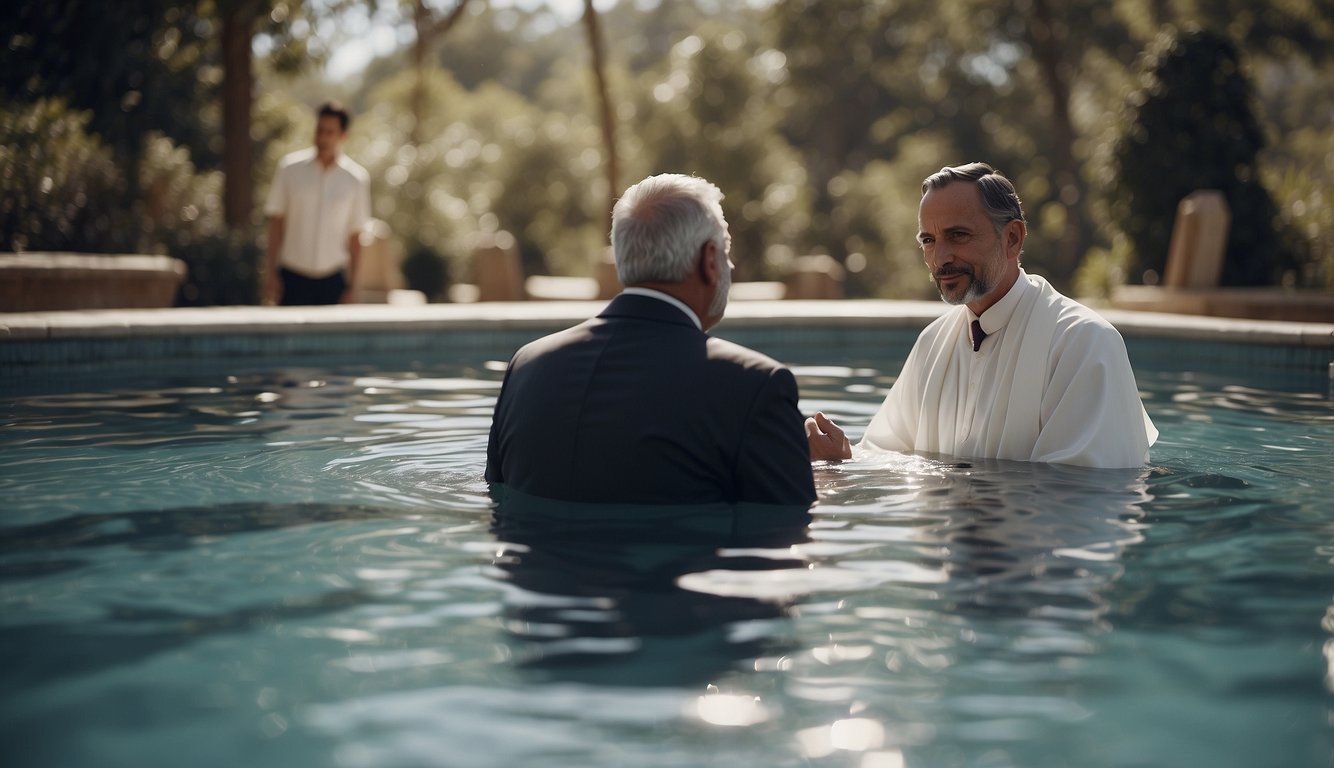
In this section, I’ll explain the proper conduct for two significant church ordinances that I often observe: Communion and respecting sacred spaces. Both are vital to worship and require a mindful approach.
Communion Etiquette
When it’s time for Communion or the Eucharist, specific steps ensure that this sacred act is approached with reverence. First and foremost, parishioners should be in a state of grace; this means being clean of mortal sins. Typically, it’s also expected to fast for at least one hour before receiving Holy Communion; nothing is to be eaten or drunk during this time, except water or medicine.
During the Mass, when parishioners proceed to the Communion table, it’s common to display piety through actions such as making the sign of the cross or bowing before receiving the Holy Gifts. It’s also a time to be reflective of the sacrifice and love that Communion represents, as it’s a profound moment of connection with the Holy Spirit.
Respecting Sacred Spaces
Treating church spaces with respect is something I hold fundamental. The altar and surrounding area are considered by many to be the most sacred places in a church. Out of respect for these spaces, I always speak in quiet tones if at all, and restrict my movements to those necessary for worship. After receiving communion, some churches distribute antidoron, which is blessed bread; it’s a sign of fellowship and should be received with gratitude.
I honor my community and faith by behaving respectfully in these sacred spaces. By being mindful of my actions and demeanor, I contribute to an atmosphere of worship that allows myself and others to focus on the spiritual experience.
Interpersonal Interaction
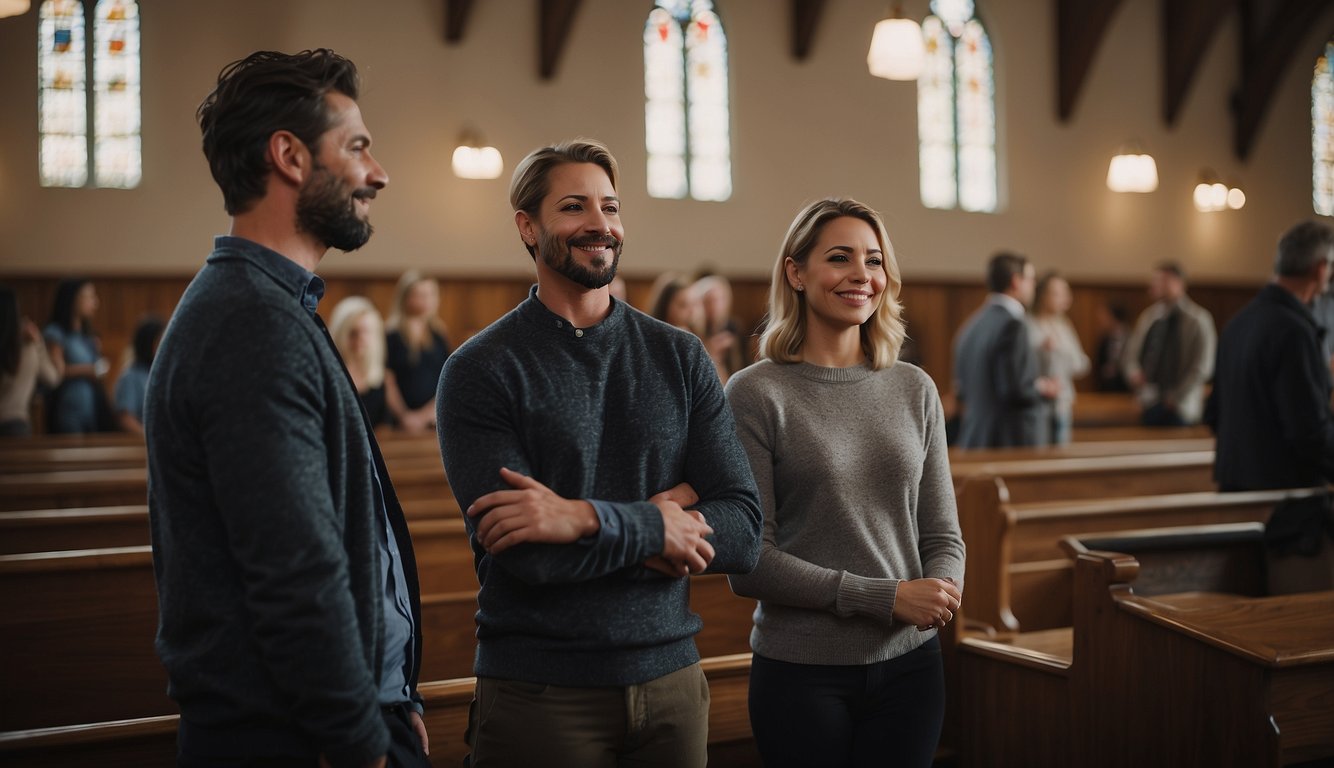
In my experience, the church is a place where interpersonal interaction is integral, but it’s essential to approach these interactions with respect and consideration for the worship environment. Here, I’ll discuss how to navigate greetings and manage distractions.
Greeting and Fellowship
When I arrive at church, I make it my priority to greet others warmly. A firm handshake or a gentle nod can go a long way in showing respect. It’s also key to prioritize inclusive fellowship over exclusive socializing.
- Do:
- Smile and offer a polite handshake or wave to those around me.
- Engage in brief conversations that build community.
- Don’t:
- Allow gossip to taint my interactions.
- Exclude others or form cliques that could make someone feel unwelcome.
During the fellowship, I am mindful that everyone is comfortable and included. It’s about making a connection that respects everyone’s space and comfort.
Managing Distractions
Distractions can affect the solemnity of the service, and it’s my job to minimize them wherever possible. I ensure my phone is on silent and avoid texting or any activities that might disturb the peace.
- Children:
- I believe it’s crucial to guide children gently on how to behave in church.
- If a child is crying, I calmly help them out of the service area to soothe them without drawing attention.
- Emergencies:
- In case of an emergency, I discreetly step outside to avoid causing any unrest.
Boldness reflects my resolve to maintain a respectful atmosphere while italicizing showcases the softness required when dealing with sensitive issues like a crying child or an unexpected text. By handling these situations with care, I contribute to a more reverent and welcoming worship experience.
Attire and Appearance
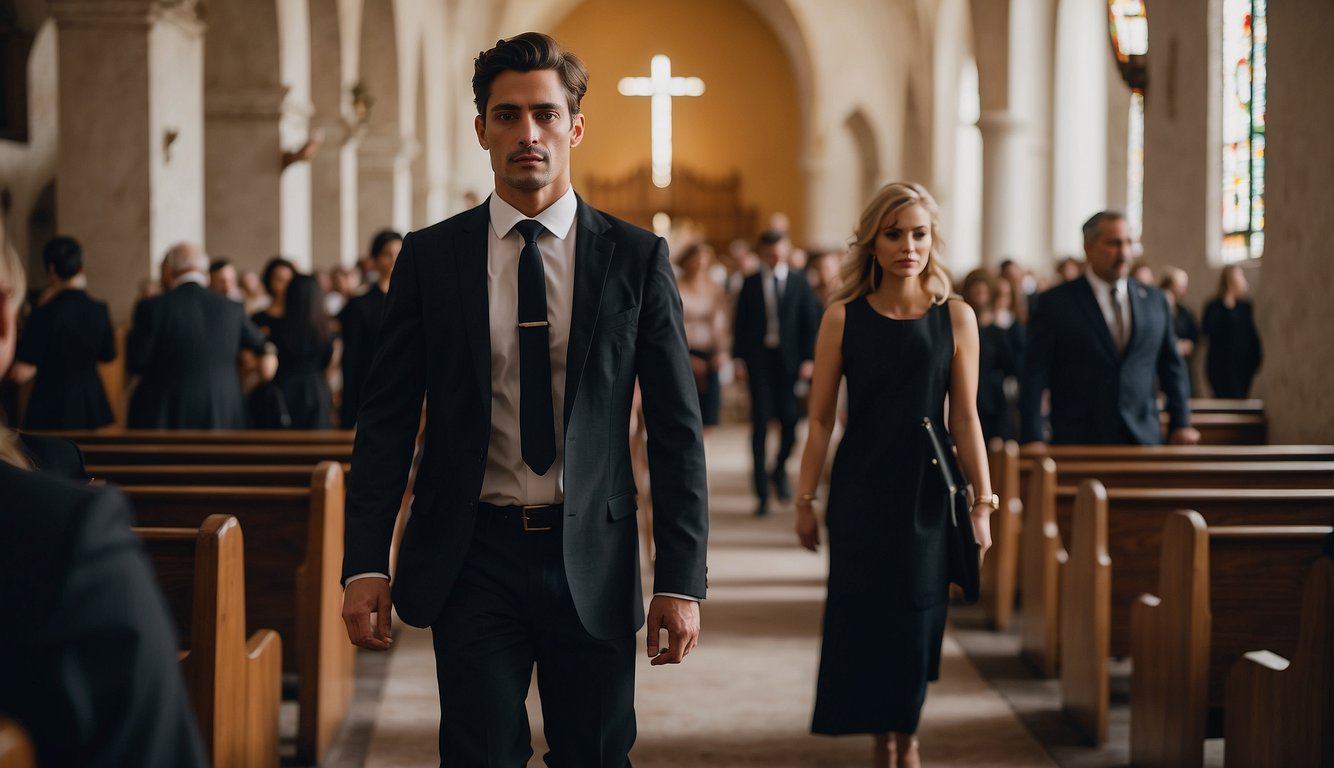
When I decide what to wear to church, I aim for attire that is considered proper and shows respect for the sanctity of the worship space. I typically choose clothing that allows me to blend in rather than stand out, putting the focus on the service rather than on me. For men, it’s common to wear a collared shirt paired with khaki pants or trousers. In my experience, shorts can be acceptable in more casual church settings, especially if the weather is warmer.
Women have a plethora of options, but the key is to maintain modesty. A conservative dress or a blouse with suitable trousers or a skirt is always a safe bet. The clothes mustn’t be too tight or flashy, as this could distract others or seem out of place. I always make sure my outfit is tidy and pressed, as it’s a subtle way of honoring the church’s etiquette.
Accessories should be understated, so instead of bright, ornate jewelry, I opt for simple pieces. If I choose to wear lipstick, I choose neutral shades over bright or bold colors.
Here’s a quick checklist that I follow:
- Men’s Attire:
- Collared shirt
- Neat trousers or khakis
- Shorts in casual settings (weather permitting)
- Women’s Attire:
- Modest dress or blouse
- Skirt or suitable trousers
- Neutral lipstick
- Accessories:
- Simple and discreet jewelry
Everyone has their own style, but I find that adhering to these guidelines helps me feel confident that I’m dressed appropriately for church.
Special Considerations
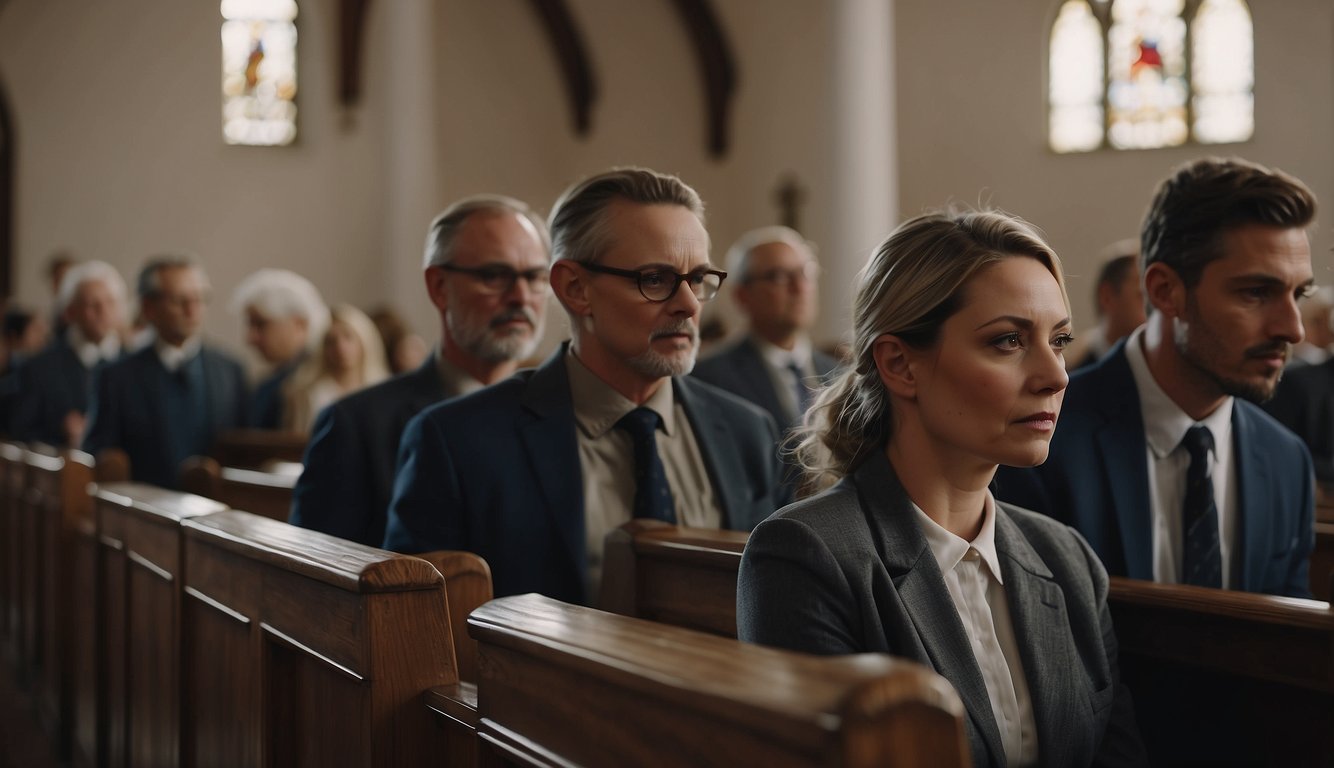
When it comes to church etiquette, I need to be extra mindful of a couple of areas. These include responsibly managing my electronic devices and attending services with young children, ensuring that both I and those around me can maintain a worshipful atmosphere.
Handling Electronic Devices
I make it a point to silence my phone or any electronic device before entering the church to prevent any disruptions during the service. If I must keep it on for emergencies, I will set it to vibrate. I also avoid using my phone for any non-urgent matters. If there’s a need to take an urgent call or respond to a message, I always step out quietly to the foyer or another designated area.
- Silence Devices: Ensure phones and electronic devices are on silent or vibrate.
- Urgent Use: If I must use my phone, I do it discreetly and step outside if necessary.
Attending with Young Children
I understand that bringing young children to church is important for their spiritual growth, but it can also present challenges. If my children start crying or fidgeting loudly, I take them to the cry room if one is available. This allows me to still participate in the service without causing a distraction to others. I also bring quiet toys or books to keep them engaged.
- Cry Room Utilization: Take advantage of the cry room for crying or fidgeting children.
- Quiet Activities: Supply soft toys or books to keep children occupied quietly.
I always strive to be considerate of others in the congregation and minimize any disruptions during the sacred time of worship.
Leaving the Service
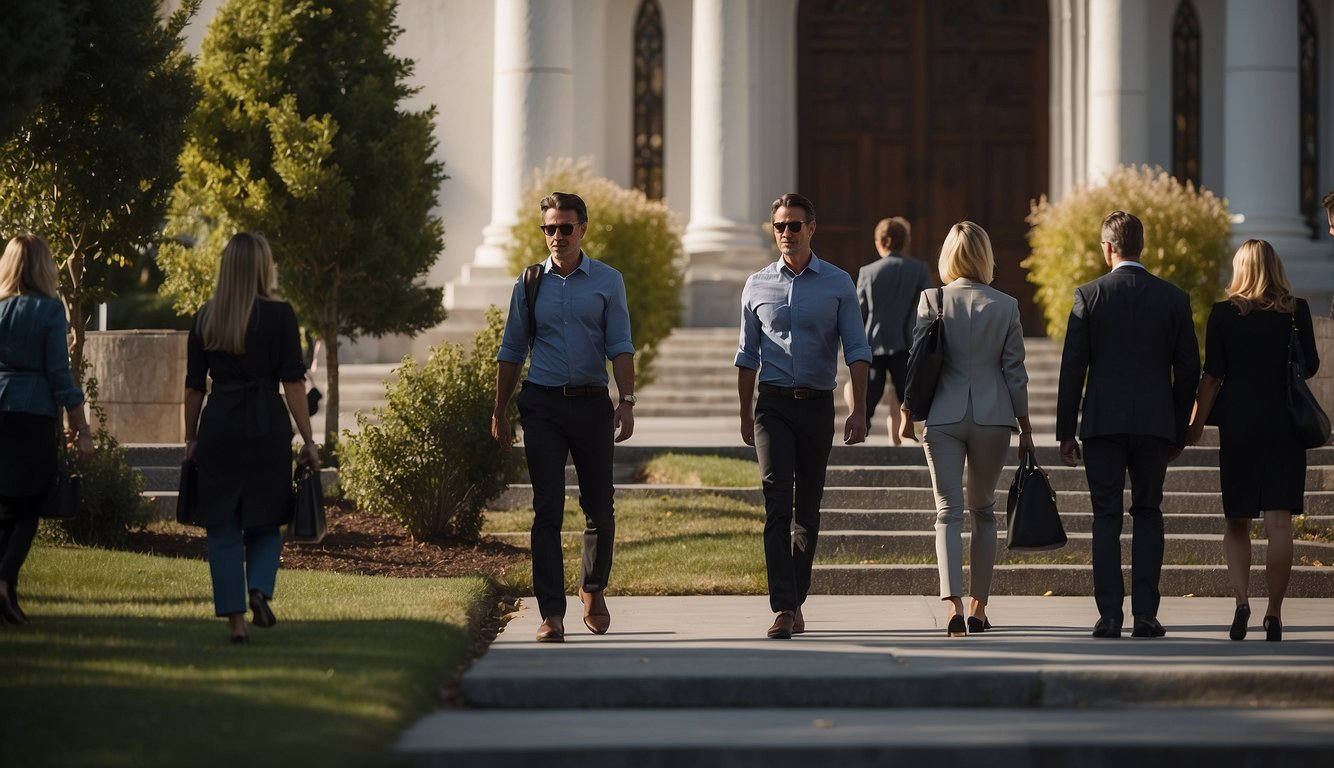
When I leave a church service, I’m always mindful of the importance of doing so with quiet respect. My goal is to honor the reverence of the space and ensure I’m not distracting others.
Exiting Gracefully
I leave early only if absolutely necessary. If I must exit before the service concludes, I do so as quietly as possible. It’s critical for me to be respectful of the ongoing service and the people around me who are still engaged in worship.
To avoid being distracting, I always check my surroundings before getting up. I wait for a natural break in the service, such as the end of a sermon or during a hymn when my movements might blend into the general activity.
When entering and exiting the pew, I take careful steps, gently excusing myself if I need to pass by others. I maintain an attitude of reverence because even though I am leaving, the church is still a place of worship and deserves to be treated as such. My focus remains on preserving the sanctity of the service for others, just as I would hope they would do for me.
Special Services and Holy Days

When it comes to special services and holy days, particularly Christmas and Easter, my community holds tradition and reverence in high regard. These occasions involve specific observances and etiquette, tailored to the solemnity and joy of the celebrations.
Christmas and Easter Observances
Christmas and Easter are the pinnacle of celebration in the Orthodox Church, heralding the birth and resurrection of Christ, respectively.
- Christmas: I always prepare by attending services on Christmas Eve, where the expectancy of Christ’s nativity heightens the atmosphere. The church is adorned with icons, and as we venerate the image of Christ, our focus is on the humility and peace His birth represents. Proper etiquette includes silence during readings and refraining from unnecessary movement during the service.
- Easter: The pinnacle of Orthodox faith, this period features multiple services leading up to Easter Sunday. The Divine Liturgy begins late Saturday evening and extends into the early hours of Easter morning, culminating in the joyful proclamation, “Christ is risen!” The entire community is involved, from children to the elderly, embodying the resurrection’s hope and joy. Attendance from the beginning is considered part of proper etiquette, symbolizing the journey from death to life.
Divine Liturgy in the Orthodox Church
The Divine Liturgy is the central worship service for me and my fellow Orthodox faithful. It is a time to participate fully in the life of the Church:
- Gospel Reading: Standing is customary during the Gospel reading as a sign of respect and attentiveness to the words of Christ.
- Liturgy Phases: Significant moments such as the Little and Great Entrances, Anaphora, and Holy Communion are observed with utmost reverence. During these times, it’s important for everyone to stand and participate prayerfully.
My attendance and conduct reflect my devotion and are essential to the full experience of the Divine Liturgy. Following these practices helps preserve the sacred tradition passed down through generations in the Orthodox Church.
Post-Service Etiquette

After the service ends, it’s my time to reflect on the message and ensure I leave my space as I found it, respecting the sacred environment and preparing it for those who follow.
Reflection and Prayer After Service
I find it valuable to take a few moments to reflect on the sermon and pray on my own. This personal time allows me to absorb the teachings and seek guidance for the upcoming week. It’s also an appropriate moment to venerate icons if my church tradition includes this practice.
Cleaning Up Personal Space
Before I leave, I make sure to clean my area in reverence of the shared worship space. This involves taking any programs, tissues, or personal items with me. If I enjoyed a coffee or snack in a designated area, I’m careful to throw away any trash or recycle. I also ensure to straighten out the chairs and return any hymnals or Bibles to their proper place. If I need to use the restroom or refresh myself before I depart, I do so quietly and tidily, mindful of others who may be engaging in post-service prayer or conversation.
Church Hierarchy and Roles
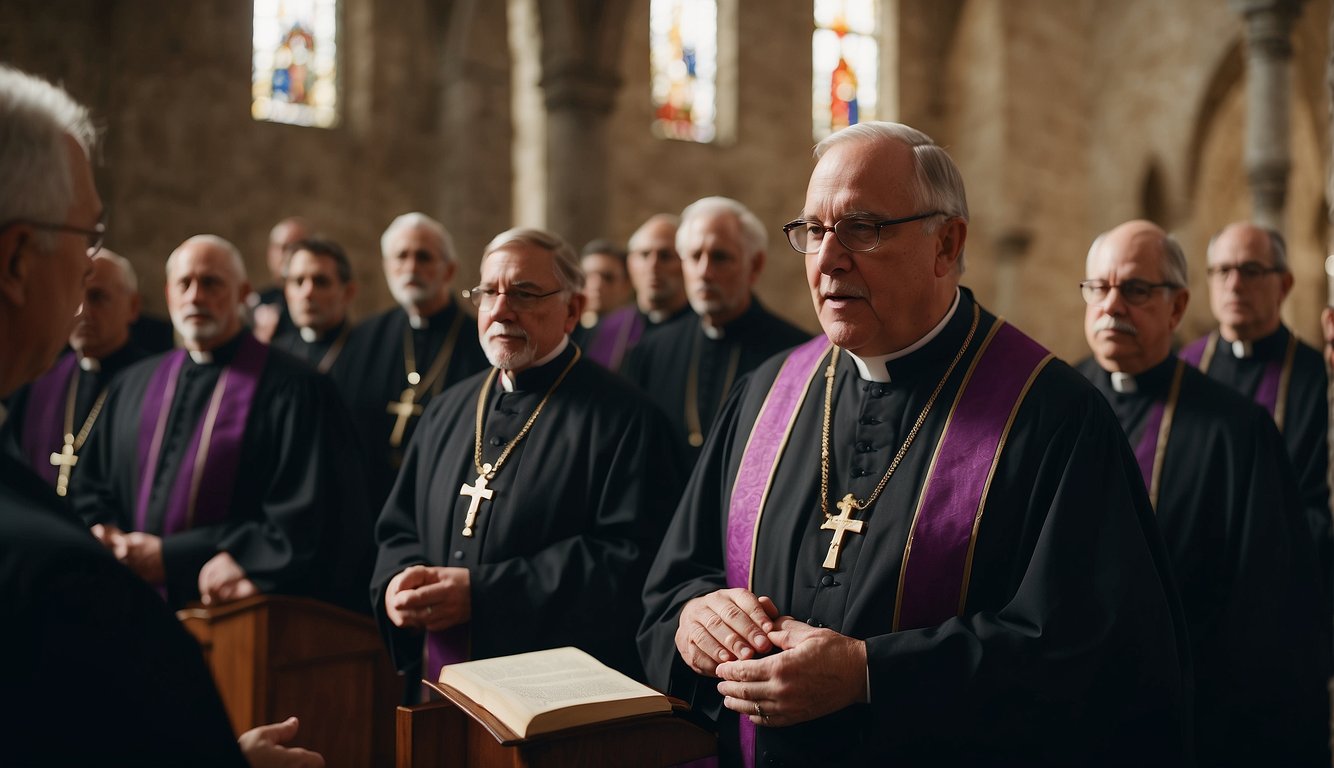
In my experience, understanding the structure and roles within the church helps foster respect and proper interactions. This is especially true when addressing those who have dedicated their lives to guiding others on their spiritual journeys.
Addressing Clergy
When I speak with a member of the clergy, I always remember that the title and manner in which I address them reflects their role and the reverence due to their position. For example:
- Priests: I typically address them as “Father,” acknowledging their role as a paternal figure in the spiritual sense, guiding their congregation closer to the Kingdom of God.
- Bishops: When I address a bishop, I usually say “Bishop” followed by their last name. They oversee multiple churches and represent the unity of the church with the Holy Spirit.
It’s important to venerate these roles properly, as they are not just leaders, but shepherds to the image of Christ, helping to shape the church of the living god.
Physical Interaction with Church Elements

When I visit a church, I notice that engaging with the environment and its sacred objects is a significant aspect of worship. It’s important to understand the proper etiquette for interacting physically with elements of the church to show both respect and reverence.
Kissing Icons and Relics
When I approach icons and relics for veneration, I must kiss the object as a sign of reverence. I make sure to do this gently and respectfully, avoiding wearing lipstick or gloss that can damage these sacred items. It’s essential not to let my actions distract others. Kissing the Gospel book or an epistle scroll when offered during services follows a similar reverent practice.
Use of Candles and Incense
Candles and incense are symbolic offerings in many churches. When lighting a candle, I carefully place it in the provided stand, making sure not to disrupt other lit candles. If I’m using incense, I’ll carefully wave or cense around the icons without causing excessive smoke that could bother other congregants or mark the walls. It’s equally important to sit or stand appropriately when using these elements, ensuring that my actions do not interfere with church benches or chairs nor pose a fire hazard.
FAQ – Church Etiquette
What is the appropriate attire for attending church services?
Dress modestly and respectfully when attending church services. While dress codes can vary among different congregations and denominations, it’s generally advisable to avoid overly casual or revealing clothing. Some churches may expect more formal attire, so when in doubt, err on the side of conservatism or check with the church beforehand.
Is it okay to arrive late to a church service?
While it’s best to arrive on time, unforeseen circumstances can sometimes cause delays. If you arrive late, enter quietly, preferably during a natural break in the service such as a hymn or reading, and choose a seat near the back to minimize disruption.
Should I participate in all aspects of the service?
Participation is generally encouraged, but you should never feel pressured to partake in any practice or ritual that makes you uncomfortable or goes against your personal beliefs. It’s perfectly acceptable to remain seated or simply observe during parts of the service that are not familiar to you.
If you enjoyed reading about Church Etiquette, check out our other articles:
- Bowling Etiquette 2024: Tips for Polite Play on the Lanes
- Surf Etiquette 2024: Key Rules for Sharing the Waves
- Tennis Etiquette 2024: Key Rules and Polite Play for Beginners
- Laundromat Etiquette 2024: Tips for a Harmonious Wash Day
- Theatre Etiquette 2024: Tips for a Respectful Audience Experience
Feel free to also check out our other Articles from the category “Etiquette & Manners“ and don’t forget to follow us on Pinterest.

